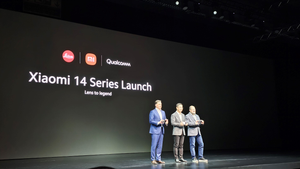A Carrier Wi-Fi Competitor
7:00 AM What prevents more companies from building seamless networks made of stitched-together hot spots?
July 20, 2012

7:00 AM -- A new proliferation of public Wi-Fi hot spots -- located everywhere from beaches to big-box home-repair stores -- has many people in the wireless industry thinking revolutionary thoughts. With cellular wireless services from the biggest carriers remaining expensive, is there an opening for a new competitor, one built not by a single entity but through a partnership of multiple interested parties? Could a company that uses unlicensed Wi-Fi bands build a cheap, powerful alternative to traditional cellular?
Sure, say proponents, pointing to the fact that such networks are already emerging, without waiting for anyone to give them approval. And even though traditional cellular providers and cable network operators are now getting into the Wi-Fi game by building their own public Wi-Fi clouds, the revolutionaries see power in numbers, mainly the millions of potential network outlets already in operation. The question is, can those unrelated providers realize and capitalize on the potential their possible alliances can bring? Or will they eventually be overwhelmed by the deep pockets of the big conventional broadband suppliers?
Theory No. 1 is that the revolutionaries are already winning, that sheer numbers will be on their side since they have already built a wider network -- albeit one not yet banded together -- than even the richest carriers could build, even if they tried.
"Anybody can become a wireless operator," said Dave Fraser, CEO of Devicescape, while speaking at a one-day conference at Stanford University earlier this month. Fraser, whose company provides network services by tapping into an ad hoc network of public Wi-Fi spots, thinks that the sheer number of possible Wi-Fi providers in the world will make the public cloud the inevitable champion.
"The reality is, carrier Wi-Fi is going to be a niche," when compared to what will be available from homes, offices and businesses like coffee shops, Fraser said.
Carriers like AT&T might beg to differ, since Ma Bell in particular has been extremely active in not just pushing out public Wi-Fi projects, but in promoting them as well, with fancy infographics sent to reporters on a regular basis, touting how much Wi-Fi traffic AT&T is carrying. (See Offload Opportunity Forces New Wi-Fi Mindset.)
Mostly, these carrier clouds are being put into areas with cellular congestion, near sports stadiums or in smartphone-heavy towns like Palo Alto, Calif. While the new carrier Wi-Fi may help AT&T and other big providers with their cellular crunch, other industry observers see the carriers' desire to build out Wi-Fi to offload cellular congestion as not a true reflection of what the coming generation of wireless users are looking for. Instead of a better cell connection those users are seeking fast wireless data -- which they already know means Wi-Fi, not cellular.
"Offloading is the wrong assumption" of what is needed, says Evan Kaplan, CEO of iPass, which provides mobility services (including a large network of vetted Wi-Fi hot spots) to the enterprise market. "There's a generation of users coming up who are looking for Wi-Fi first -- that's the service they want."
Kaplan says that non-carrier Wi-Fi has made a sort of comeback. "Public Wi-Fi looked dead two years ago, but it's on fire now."
Still, in the quest to build out more Wi-Fi hot spots Kaplan, like others, notes that having fixed-line assets in the ground to bring fast Internet access around is a big factor in the favor of big wireline providers such as AT&T and Verizon, and cable companies.
And a big footprint also means that customers of big telcos or cable providers might be able to find authorized service in many locations; AT&T, for example, boasts of having more than 25,000 hot spots while five of the top U.S. cable carriers have signed an agreement to let their high-speed Internet customers tap into as many as 50,000 Wi-Fi hot spots. If carriers can keep their customers in the fold, they can keep them tethered to their long-term cellular or broadband and TV contracts -- with the "free" Wi-Fi thrown in as an incentive to stay. (See Cable Goes Big With Wi-Fi Roaming .)
How can the revolutionary network compete? Perhaps initially on price, through such vehicles as the Republic Wireless endeavor, whose unlimited $19-per-month access plan is made possible by using public Wi-Fi for most of the user's data connectivity. Further on down the road, there might be public wireless networks that far outperform even the carriers' own networks; the recent announcement of a plan backed by Google and Microsoft to use the so-called TV White Spaces to bring "super Wi-Fi" to college campus communities could serve as a model for other independent local wireless nets, especially those with independent gigabit networks in place. (See Startup Taps Devicescape for Wi-Fi-First Network and Vendors Intrigued by Gigabit Network Project.)
In the near term, there is likely going to be a wide mix of both big-carrier and small-business Wi-Fi available, with new competitive ideas (such as free Wi-Fi with a purchase in the store) keeping the pressure on to keep connection prices low. The keys will be to figure out ways to make it easier for users to find and connect to services, and to find business models that make sense for providers of every part of the total service equation. As the Stanford conference program noted, "the future of wireless innovation is here." Should be fun to watch.
Paul Kapustka is editor and founder of Mobile Sports Report, a new site dedicated to the intersection of mobile-social technologies and the sports industry.
You May Also Like










